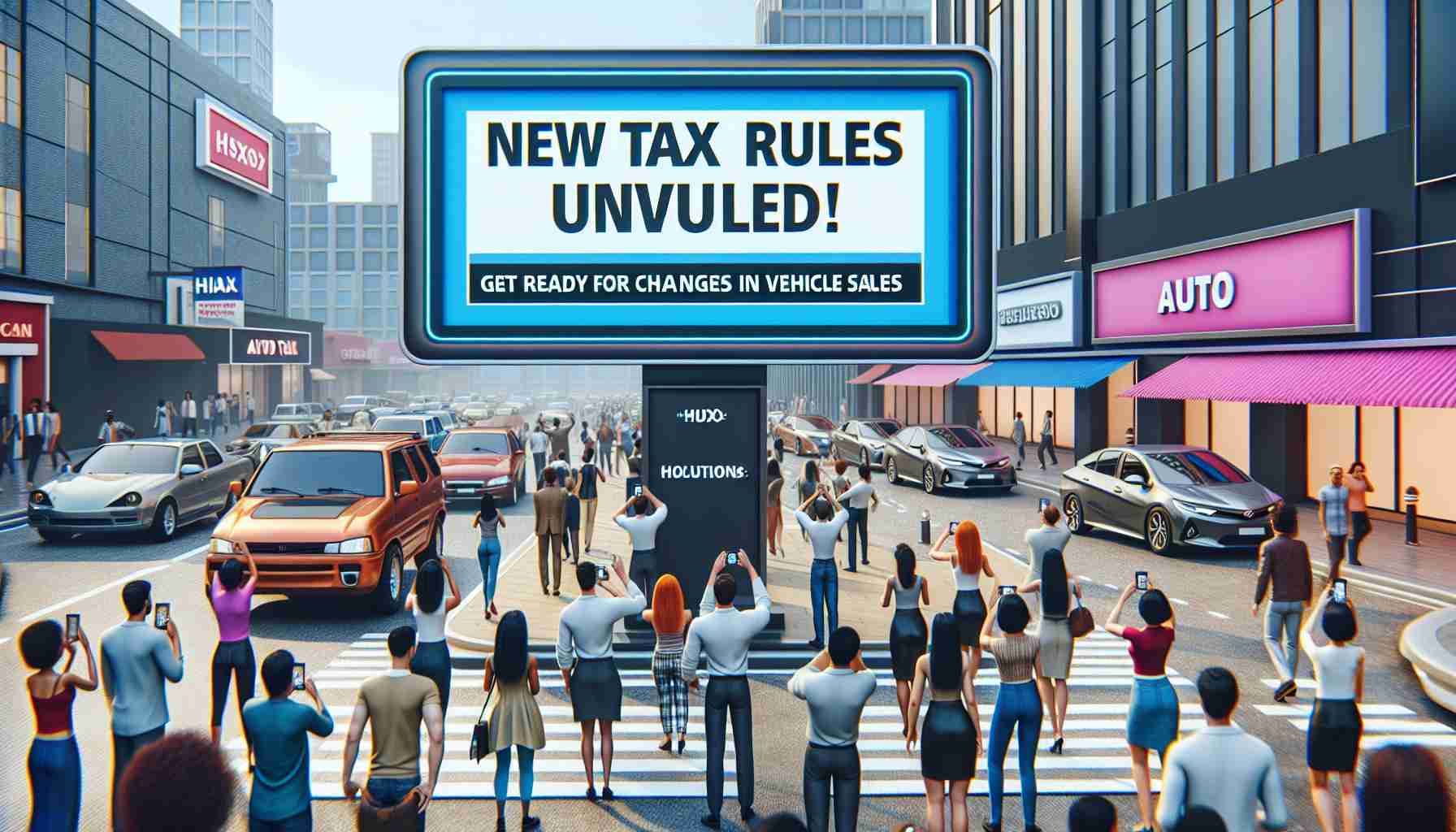Exciting updates from the GST Council are making major waves in the vehicle market!
In a recent development, the Central Board of Indirect Taxes and Customs (CBIC) has implemented new GST norms that will impact the sale of used electric vehicles and smaller petrol and diesel cars. This change imposes an 18% GST on the sale margin of these vehicles, equalizing their tax rate with other used vehicles.
Additionally, luxury hotels are set to enforce a 5% GST on their in-house restaurants, applicable only to those with room tariffs exceeding ₹7500. It’s important to note that this regulation will come into effect starting April 1. These steps follow recommendations made by the GST Council, aiming to simplify the tax structure for older vehicle sales.
Under the new rules, only registered vehicle dealers that conduct business transactions will be responsible for paying the GST, while individuals selling their personal used cars to other individuals will be exempt from this tax. The GST is calculated only on the profit margin after considering any depreciation under the Income Tax Act. If a seller’s margin is negative, no GST is due.
For example, if a registered dealer sells a vehicle for ₹10 lakh, which was originally purchased for ₹20 lakh and has depreciated ₹8 lakh, no GST will be charged as the margin is negative. However, if conditions change, and the sale price exceeds the depreciated value, the applicable GST will be based on the profit margin.
Stay informed about these crucial changes affecting vehicle sales and hospitality establishments!
Broader Implications of New GST Norms in the Vehicle Market
The recent adjustments to GST regulations are not merely changes in taxation; they herald a significant shift in the broader landscape of consumer behavior and economic strategy in India. By imposing an 18% GST on used electric vehicles and compact internal combustion engine cars, the government appears steadfast in its commitment to promote the transition toward greener technologies while simultaneously aligning tax structures. This move could lead to a notable increase in the demand for electric vehicles, as buyers seek to capitalize on the existing tax advantages associated with newer models.
Culturally, the normalization of electric vehicles through integration into the used car market could enhance public perception of sustainable transportation, fostering a greater societal shift towards environmentally-friendly practices. The associated recognition of depreciation-based taxation may also encourage potential sellers to disclose more accurate vehicle valuations, thereby promoting transparency in the second-hand vehicle market.
On an economic level, this policy marks a response to the shifting paradigms of global automotive markets where the electric vehicle sector is projected to surpass 26 million units sold by 2030, according to industry estimates. If similar tax structures gain prominence across various nations, they could influence international trade dynamics, potentially creating a ripple effect on the global economy.
In summary, these recent GST updates are poised to reshape the vehicle market and broader economic interactions in India, establishing a noteworthy precedent for sustainability and innovation in both policy and practice.
Understanding the Impact of New GST Regulations on Vehicle Sales
Exciting updates from the GST Council are making major waves in the vehicle market!
The recent updates from the Goods and Services Tax (GST) Council are set to significantly reshape the vehicle sales landscape in India, especially for used electric and smaller conventional vehicles. These updates, driven by recommendations from the GST Council, aim at creating a more uniform tax structure across various vehicle categories.
Key Changes in GST Regulations
1. 18% GST on Used Vehicles:
The Central Board of Indirect Taxes and Customs (CBIC) has introduced an 18% GST on the sale margin of used electric vehicles as well as smaller petrol and diesel cars. This aligns the tax rate of used electric vehicles with other categories of used vehicles, simplifying the compliance for dealers and enhancing revenue for the government.
2. Exemptions for Private Sales:
One of the notable aspects of the new regulations is the exemption of GST for individuals selling their personal vehicles. Only registered vehicle dealers will be responsible for paying this tax, which underscores a significant shift aimed at facilitating private vehicle transactions without the burden of extra tax.
3. Tax Calculation Based on Profit Margin:
The GST will only be applicable on the profit margin after accounting for depreciation as prescribed by the Income Tax Act. This means if a dealer sells a vehicle at a price lower than its depreciated value, they will not incur any GST liabilities.
– Example of GST Application: If a registered dealer sells a vehicle for ₹10 lakh, which was originally purchased for ₹20 lakh and has depreciated ₹8 lakh, the GST calculation will yield a negative margin, thus no GST will be charged. Conversely, if the sale price exceeds the depreciated value, the taxable margin would be established, triggering the applicable GST.
Implications for Market Players
Pros:
– Simplicity for Dealers: By focusing on registered dealers and easing individual sellers from tax burdens, the regulations streamline the vehicle sales process.
– Encouraging Electric Vehicle Sales: The push for electric vehicle sales through an equitable tax treatment could further promote the transition towards sustainable transport solutions.
Cons:
– Potential Confusion for Small Dealers: Small dealerships may find the requirement to track depreciation and calculate profit margins burdensome, especially without adequate tools or accounting practices.
Looking Ahead: Trends and Predictions
As the GST Council’s new rules come into effect on April 1, the vehicle market can expect various shifts. The equalization of tax rates may stimulate demand for used electric vehicles, pushing consumers towards more sustainable options. Furthermore, as vehicle regulations evolve, we might witness increased transparency in pricing and sales transactions, enhancing consumer confidence in the used vehicle market.
Conclusion
These significant updates from the GST Council are critical for both vehicle dealers and consumers. It is essential for interested parties to stay informed about these changes to navigate the evolving landscape effectively. For further insights and updates, visit CBIC’s official site.
With these changes, the vehicle market is poised for transformation, signaling a progressive approach by the government to accommodate both ecological needs and market dynamics.













